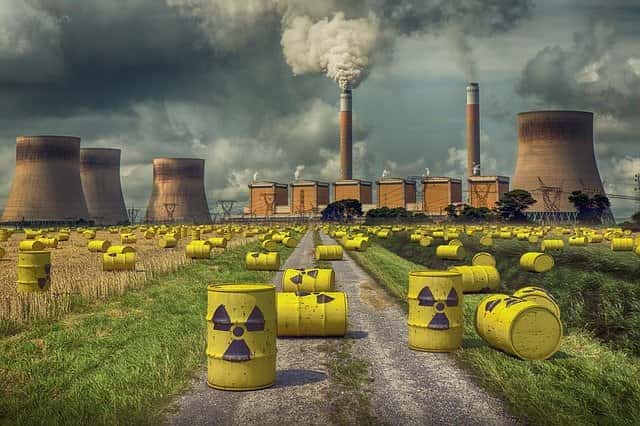Breaking down the bloodstains following a shooting can be critical to discovering the culprit, yet it's a field of criminology that is being raised doubt about. Sidney Perkowitz clarifies how understanding the physics behind the blood dispersion could assist with revealing reality
Joe Bryan, when a famous and regarded secondary school head in a little Texas town, has been in prison for over 30 years. He is carrying out a 99-year punishment for the shooting and murder of his better half in 1985. The proof implicating him included spots of the casualty's blood found on a hand-held light.
An observer, who was appraised as the master in the criminological strategy of blood design examination (BPA), deciphered these spots as putting Bryan close to his significant other when she was shot – a declaration that was at the front line of Bryan's conviction.
Also read: The Acoustic Foam And Different Sound Frequency
It abrogated balancing proof that he was truth be told at a gathering 120 miles away – a plausible excuse that made it almost unimaginable for him to have shot his significant other, as he would have needed to leave the occasion, travel home, submit murder and return to the meeting inside a particular time span. Bryan keeps up with his guiltlessness right up 'til today.
Proof-like this, in light of the actual conduct of the blood created at a prime location, has established in late nineteenth-century Europe. It became noticeable in the US during the renowned Sam Sheppard murder preliminary in 1955, and plays had a significant impact in other homicide preliminaries since – including those of football player and entertainer O J Simpson (1994–1995, decision of not blameworthy) and music maker Phil Spector (2007–2009, retrial decision of liable).
Police examiners use BPA to work in reverse from blood follows at a crime location, permitting them to reproduce the areas and activities of individuals and weapons included. The follows incorporate dribbles, spreads, and splashes, which are made when drops of blood transmit from the effect of a projectile or heavy-handed tool until they experience a surface and stain it.
Yet, as per an alarming 2009 report from the US National Academy of Sciences (NAS) that actually resounds today, BPA needs logical thoroughness and substantial accreditation for its professionals. This is a significant concern because BPA results have sentenced individuals later demonstrated to be blameless, as many trust Bryan to be; and because the absence of trust in BPA examination might permit the blameworthy to go free. Thus, it has gotten fundamental to re-survey the physics behind BPA.
Albeit the US drives the world in weapon proprietorship – there are 120 firearms for every 100 individuals, and 64% of US crimes are firearm-related – different nations have numerous shootings as well. For example, 30% of crimes in Canada include weapons, while twelve countries, including Brazil, surpass the US in their pace of firearm passings per 100,000 individuals.
Setting up the logical legitimacy of BPA could in this way universally affect managing the world's 250,000 yearly firearm-related passings by assisting with arranging them as crimes or suicides – and, in the previous case, conceivably bringing the culprits to justice.
As far as physics, BPA remaking is a confounding issue in liquid mechanics that includes following the conduct of blood, under different powers and surrounding conditions. The test is made more troublesome because blood is an intricate liquid containing both fluid (the plasma) and strong (the blood cells) segments. Besides, the properties of blood – like its pH or the number of red blood cells – differ from one individual to another.
However, this work is something beyond a scholastic exercise. It can likewise have genuine impacts, as per Alicia Carriquiry at Iowa State University in the US. As an analyst and head of the Center for Statistics and Applications in Forensic Evidence (CSAFE) – which is financed by the US National Institute of Standards and Technology (NIST) –, Carriquiry has an expansive perspective on scientific science.
"BPA is one of those spaces in which science has a ton to say," she says. "Rather than other scientific disciplines, in BPA we really have physical and liquid dynamical models that can assist with addressing questions like those having to do with direction, starting place, and comparative."
Essential science has, be that as it may, not been very much applied to BPA, as per the 2009 NAS report, which was entitled Strengthening Forensic Science in the United States. Co-led by a recognized US government judge and a scholarly analyst, it included benefactors from important logical disciplines including physics.
By and large, aside from DNA examination, the report discovered insufficiencies in for all intents and purposes each measurable strategy – including the investigation of hair, filaments, fingerprints, and indentations. "The translation of criminological proof isn't constantly founded on logical examinations to decide its legitimacy," it expressed. "This is a significant issue."
A different report in 2016 from the US president's Council of Advisors on Science and Technology – composed by the head of the Office of Science and Technology Policy along with a board of researchers – repeated this study.
For BPA specifically, the NAS report noticed the intricacies of liquid elements and demonstrated that BPA examiners ought to comprehend the physics in question. Yet, with no severe instructive necessities for accreditation as a BPA master – they're prepared uniquely to follow bundled methods – the report presumed that "The assessments of bloodstain design investigators are more emotional than logical… The vulnerabilities related with [BPA] are tremendous."
In 2018 the Texas Forensic Science Commission arrived at comparable decisions about the Bryan case, calling the understanding of the BPA proof "incorrect" and "experimentally unsupportable".
In any case, appropriately utilized, BPA can give important hints towards understanding the conditions of shooting. For instance, drops of blood that strike the floor at a point will make a bunch of curved stains, whose width-to-length proportion gives the effect point.
BPA investigators are prepared to define straight-boundary directions that follow the long component of every oval at that effect point. These ways merge, giving a situation from which the blood started. While this accurately gives the projection onto the floor of the area of a gunfire wound, the straight-line strategy misjudges the stature of the injury, since the genuine ways under gravity are parabolas changed by streamlined drag. The blunder is regularly huge enough to wrongly put a casualty as standing instead of sitting.
Spanning the current holes among crime scene investigation and science isn't trifling. There's an inborn test to investigating crime locations, which are, as it were, the world's most exceedingly terrible time cases: At best, they to some degree protect the remaining parts of an intricate, muddled issue that must be tackled backward.
Much of the time, the example left by a bloodstain, including the number, size, area, and generally speaking appropriation of beads, can uncover a great deal about the shooter, casualty, and weapon included. However, a portion of the strategies that blood scatter investigators have utilized in the past to figure out the direction and starting place of a stain might have been excessively basic, leaving out a portion of the complexities of how blood moves and distorts after leaving the body, says Daniel Attinger, a mechanical designer at Iowa State University.








0 Comments
Thanks for your feedback.